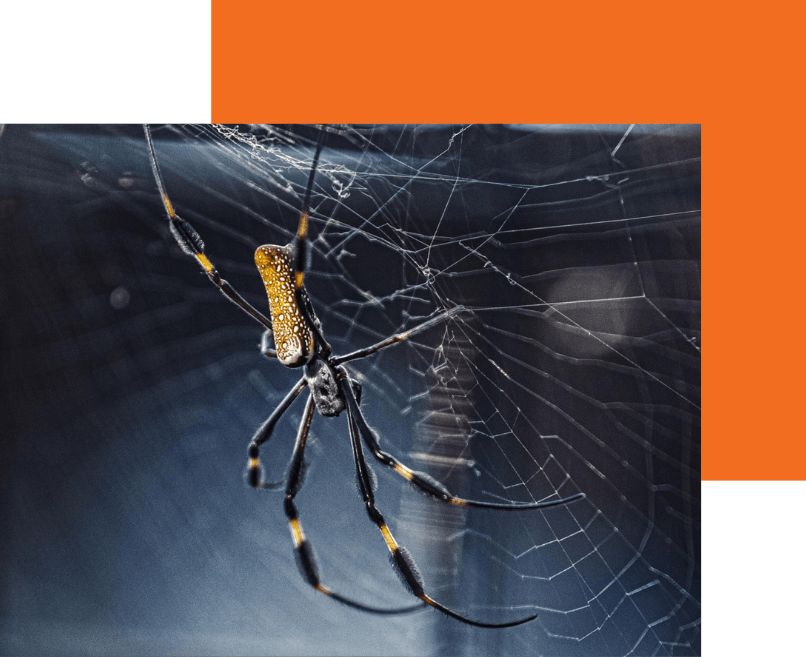Spiders
Spiders have been crawling around nearly every nook and cranny on Earth for 400 million years, and our homes are no exception. As the most common household pests, they find their way into two-thirds of American houses. Once a female settles in, it can lay hundreds to thousands of eggs at one time, allowing a small population to get out of hand quickly. Though most are harmless, their venom can cause temporary skin irritation and sometimes pain. Fortunately, it takes a lot of energy to produce even a small amount of venom, meaning most will not release it unless they are trapped or in danger of dying.
Though many people view them as unwanted intruders, they are an essential part of the ecosystem as the pest control kings. Annually, they consume 400-800 million metric tons of prey, and most of their diet consists of troublesome insects lurking in our homes and gardens, such as roaches, mosquitoes, and aphids. They have such a significant environmental impact that experts say our food supply would be at risk if it were not for spiders controlling agricultural pests.
Common In Missouri
Unfortunately for arachnophobes, there are 300 species in Missouri. They infest nearly every kind of habitat, from 30,000 spiders per acre in the woodlands to 2 ½ million per acre of grassland. The largest and most intimidating is the only tarantula native to the area, called the Texas Brown Tarantula. Unlike most spiders which live for one season, female tarantulas can live for more than 30 years. Other common species include Wolf, which can travel at an astonishing speed of two feet per second, and Orb Weavers, creators of elaborate silk webs often found in outdoor gardens.
Poisonous Missouri Spiders
Missouri is home to two poisonous spiders, both of which can be deadly. The Brown Recluse is the more common species due to its proactive hunting nature, though neither frequent busy areas. As the name suggests, these spiders like to keep to themselves, hiding in undisturbed areas, such as in closets, woodpiles, and clothing or under sinks. Their most identifiable feature is a violin-shaped marking. They are much more difficult to tell apart from other species than the Black Widow, which is black and glossy with a bright red hourglass-shaped marking on its large abdomen. Black Widows are also more dangerous, with venom 15 times more powerful than a rattlesnake. They are similarly solitary, making their tangled webs in abandoned or infrequently used outbuildings, barns, cabins, storage units, or tree trunks.
Knowledgeable And Transparent Pest Control
Though you may be tempted to eliminate spiders on sight, oftentimes, it is best to hold off and call a pest control company to carry out the deed. It is not a good idea to risk a poisonous bite from a widow or recluse. Moreover, spiders are becoming immune to store-bought pesticides and likely to repopulate. At Cardinal Insect & Pest Solutions, we know the best strategies for finding creepy crawlies and how to keep them at bay. Contact us today to keep your home cobweb free.


